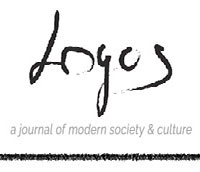Labor’s Rank-and-File Owes OWS a Thank-You Card for its PR Help
The Occupation movement has been unfairly but predictably criticized in the mainstream media for having an ill-defined political agenda and no clear path to institutionalizing its struggle against long-standing abuses of corporate power in America.
While all that gets sorted out in its free-wheeling “general assemblies around the country, Occupy Wall Street (OWS) has already given our timorous, unimaginative, and often politically confused unions a much-needed ideological dope slap.
Some might describe this, more diplomatically, as a second injection of “outside-the-box” thinking and new organizational blood. The first infusion of those scarce commodities in labor came earlier this year during the completely unexpected labor-community uprising against GOP Governor Scott Walker in Cairo-by-the-Lake (aka Madison, Wisconsin).
I can confidently predict that OWS, as a worthy and widespread successor to the Wisconsin uprising, will be long remembered even if it leaves no other historical footprints than its brilliant popular “framing” of the deepening class divide in this country.
In his 1974 memoir and union history, Jim Matles, a founder of the left-led United Electrical Workers (UE), reminded readers that labor struggles are about “them and us”—or, as OWS puts it, “the 1 percent” vs. the “99 percent.”
Unfortunately, most other unions have long relied on high-priced Democratic Party consultants, their focus groups and opinion polling, to shape labor’s public “messaging” in much less effective fashion. The results of this collaboration have been unhelpful, to say the least. Organizations that are supposed to the voice of the working class majority have instead positioned themselves–narrowly and confusedly–as defenders of America’s “middle class,” an always fuzzy construct now being rendered even less meaningful by the recession-driven downward mobility of millions of people.
As SUNY professor Michael Zweig has argued in his book, The Working Class Majority: America’s Best-Kept Secret (Cornell ILR Press, 2000), labor’s never ending mantra about the “middle class” leaves class relations—and the actual class position of most of the population–shrouded in rhetorical fog. Zweig acknowledges that the working class in America today looks quite different than the blue-collar proletariat of the last century, which leads many to believe that differences in “status, income, or life-styles” define where they stand on the economic and social ladder. But “the real basis of social class lies in the varying amounts of power people have at work and in the larger society….The sooner we realize that classes exist and understand the power relations that are driving the economic and political changes swirling around us, the sooner we will be able to build an openly working class politics.”
As Zweig would agree I’m sure, labor’s “framing” not only lacks the clear resonance of that employed by the new anti-capitalist campaigners of OWS; “one of the great weaknesses” of the standard union view of class “is that it confuses the target of political conflict.” When the working class disappears into an amorphous “middle class,” not only do the “working poor” (a mere 46 million strong) drop out of the picture, but “the capitalist class disappears into ‘the rich.’ And when the capitalist class disappears from view, it cannot be a target.”
Well, thanks to OWS —but not most unions—that target is back in view, big time. So now, even some union officials are racing to catch up with a grassroots movement that has provided a far more favorable public opinion context for waging key contract fights like the on going CWA-IBEW battle with Verizon.
During the two-week strike by 45,000 Verizon workers in August, union PR people issued leaflets urging support for their “fight to defend middle-class jobs.” This characterization of strike goals enabled Verizon to run newspaper ads claiming that the $75,000 a year or more earned by telephone technicians made them part of the “upper middle class”—and thus, apparently not worthy of sympathy from customers or members of the public whose jobs provide family incomes closer to the national or regional average.late October, CWA activists were brandishing new anti-Verizon signs at a “corporate pig roast” held right around the corner from “Cuomoville,” the OWS encampment located in downtown Albany (where vegan and vegetarian fare prevails over pork). This time, the union message was more universalist: “We are the 99 percent!”
While it’s heartening to see union leaders making little pilgrimages to the new Lourdes—aka Zuccotti Park and similar high-profile camping sites around the country–I remain skeptical about what miraculous transformations are likely to occur among the organizationally old, blind, and lame of American labor. The interactions between protestors and union members at the rank-and-file level have, of course, been inspiring and maybe even transformative. But a labor officialdom so long in the clutches of inside the Beltway PR consultants is not likely to cast off the crutch of bad “middle class” messaging. Only union members, more in touch with what side they’re on and what class they’re part of, can make that course correction in labor’s communications strategy.
Steve Early is a former national staff member of the Communications Workers of America (CWA) who has been active in labor causes since 1972. He is a widely published labor journalist and author of Embedded With Organized Labor (Monthly Review Press, 2009) and The Civil Wars in U.S. (Haymarket Books, 2010.

